MN 568 Unit 6 Quiz
1. Which of the following is an infraorbital fold skin manifestation in a patient with atopic dermatitis?
2. Harvey has a rubbery, smooth, round mass on his chest that is compressible and has a soft-to-very-firm texture. What do you diagnose this as?
3. Eighty percent of men have noticeable hair loss by what age?
4. A 46-year-old man presents with urinary hesitancy and low back pain. He has no history of UTI. Digital rectal examination (DRE) reveals a normal prostate, and a diagnosis of prostatodynia is made. Which is the appropriate treatment?
5. Tori is on systemic antifungals for a bad tinea infection. You are aware that the antifungals may cause:
6. The patient with BPH is seen for follow-up. He has been taking finasteride (Proscar) for 6 months. The clinician should assess this patient for which of these side effects?
7. The patient is diagnosed with acute renal failure (ARF). Which of the following data obtained from the history should alert the provider that this is a case of prerenal azotemia?
8. Which scalp problem can be caused by a fever and certain drugs?
9. Tinea unguium is also known as:
10. A patient is seen complaining of “leaking urine when I sneeze.” Which of the following actions should the clinician take first?
11. Your patient is in her second trimester of pregnancy and has a yeast infection. Which of the following is a treatment that you usually recommend/order in nonpregnant patients, but is listed as a Pregnancy category D?
12. Marci has a wart on her hand. She says she heard something about “silver duct tape therapy.” What do you tell her about his?
13. When instructing your elderly client about treating her xerosis, what do you tell her?
14. Which is the most potent and irritating dose of tretinoin?
15. Which of the following data is indicative of testicular torsion?
16. A 22-year-old male is seen in the clinic because he found a hard lump in his testicle when performing testicular self-examination (TSE). Which of the following should be included in the list of differential diagnoses?
17. A patient is diagnosed with urge incontinence. Before prescribing Detrol XL, the provider should question the patient about which of these contraindications to this medication?
18. An 82-year-old man is seen in the primary care office with complaints of dribbling urine and difficulty starting his stream. Which of the following should be included in the list of differential diagnoses?
19. The most common precancerous skin lesion found in Caucasians is:
20. A 30-year-old man is seen with a chief complaint of loss of libido. Which of the following laboratory tests would help establish a diagnosis?
21. A patient is seen in the clinic with a chief complaint of hematuria. To make a differential diagnosis, which of the following questions should be asked?
22. An example of a primary skin lesion is a/an:
23. The clinician should prescribe an antibiotic that covers which of these organisms for a patient with acute prostatitis?
24. Of the following types of cellulitis, which is a streptococcal infection of the superficial layers of the skin that does not involve the subcutaneous layers?
25. A 60-year-old man presents with an enlarged scrotum. The clinician uses a penlight to transilluminate the scrotum. In a patient with a hydrocele, what would the clinician expect to find?
26. When using the microscope for an intravaginal infection, you see something translucent and colorless. What do you suspect?
27. The 56-year-old man with chronic prostatitis should be treated with trimethoprim 80 mg-sulfamethoxazole 400 mg (TMP-SMX, Bactrim) for how long?
28. The patient is diagnosed with ARF. Which of the following conditions is the most common cause?
29. A patient with testicular cancer is being followed after completing treatment 1 year ago. He has been symptom-free with no evidence of disease. How often should he have a CT scan?
30. Ian, age 62, presents with a wide, diffuse area of erythematous skin on his lower left leg that is warm and tender to palpation. There is some edema involved. You suspect:
31. Which of the following patients is at risk for developing urinary tract cancer?
32. Prevalence of psoriasis is highest in which group?
33. A 63-year-old man is seen in the clinic with a chief complaint of nocturia. Which of the following should be included in the differential diagnosis?
34. Which test is used to confirm a diagnosis of epididymitis?
35. A patient is seen with a sudden onset of flank pain accompanied by nausea, vomiting, and diaphoresis. In addition to nephrolithiasis, which of the following should be added to the list of differential diagnoses?
36. A 27-year-old female presents with a chief complaint of burning and pain on urination. She has no previous history of urinary tract infection (UTI). What are some additional symptoms consistent with a diagnosis of lower UTI?
37. A bulla is:
38. Which of the following should be considered in a patient presenting with erectile dysfunction?
39. Which of the following is “a linear crack extending from the epidermis to the dermis?”
40. A 23-year-old sexually active man is seen in the clinic with unilateral painful testicular swelling, and he is diagnosed with epididymitis. In order to prescribe the correct drug, the clinician must understand that which of these is the most common causative organism?
41. Simon presents with alopecia areata with well-circumscribed patches of hair loss on the crown of his head. How do you respond when he asks you the cause?
42. A 78-year-old man is diagnosed with C2 prostate cancer, and he asks the clinician what that means. In order to answer the patient, the clinician must have which of these understandings of the Jewett rating system?
43. A patient is seen in the clinic with hematuria confirmed on microscopic examination. The clinician should inquire about the ingestion of which of these substances that might be the cause of hematuria?
44. A 30-year-old patient presents with pain on urination. The urine microscopy of unspun urine shows greater than 10 leukocytes/mL, and a dipstick is positive for nitrites. What is the probable diagnosis?
45. Josh, aged 22, has tinea versicolor. Which description is the most likely for this condition?
46. Which of the following are predisposing factors for pyelonephritis?
47. A patient is seen in the clinic and diagnosed with Stage I renal cancer. The provider should refer the patient to a nephrologist for which of these treatments?
48. A patient is seen in the office complaining of severe flank pain. The clinician should assess this patient for which risk factor for kidney stones?
49. A 42-year-old woman is seen in the clinic with fever, chills, vomiting, and severe dysuria. She is diagnosed with acute pyelonephritis. How should this patient be managed?
50. Mark has necrotizing fasciitis of his left lower extremity. Pressure on the skin reveals crepitus due to gas production by which anaerobic bacteria?
| Institution & Term/Date | |
| Term/Date | Kaplan University |
MN 568 Unit 6 Quiz (Set 2)
- Product Code: 2022
- Availability: In Stock
-
$19.99
Related Products
MN 568 Unit 2 Quiz (Set 1)
$19.99
MN 568 Unit 2 Quiz (Set 2)
$19.99
MN 568 Unit 2 Quiz (Set 3)
$19.99
MN 568 Unit 4 Quiz (Set 2)
$19.99
MN 568 Unit 4 Quiz (Set 3)
$19.99
MN 568 Unit 6 Quiz (Set 1)
$19.99
MN 568 Unit 6 Quiz (Set 3)
$19.99
MN 568 Unit 8 Quiz (Set 1)
$19.99
MN 568 Unit 8 Quiz (Set 2)
$19.99
MN 568 Unit 8 Quiz (Set 3)
$19.99
MN 568 Unit 4 Quiz (Set 1)
$19.99

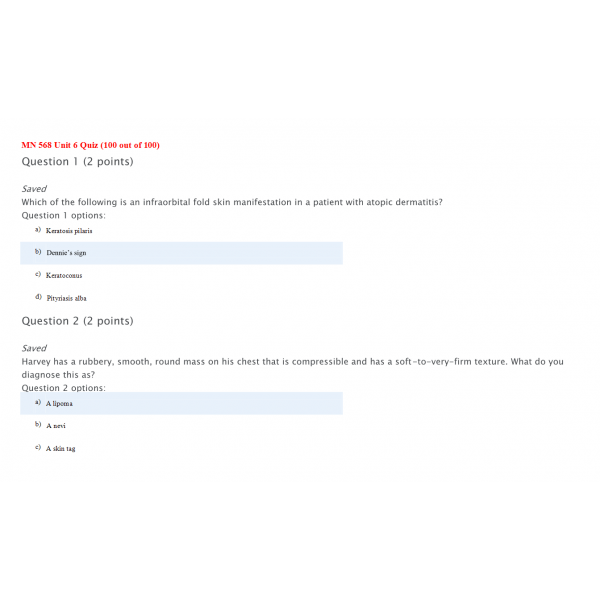
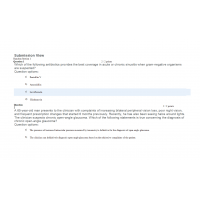
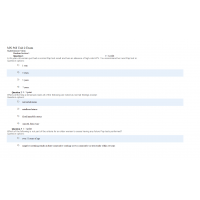
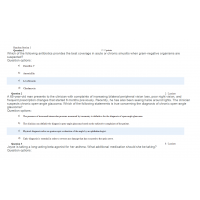
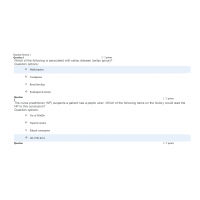
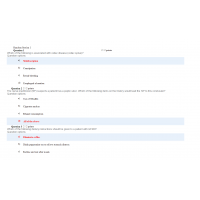
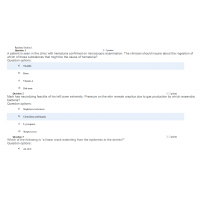
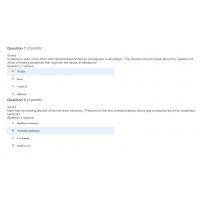
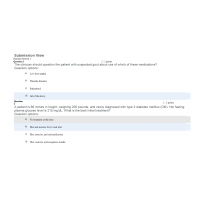
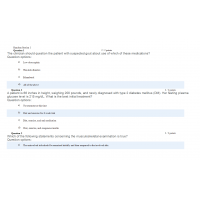
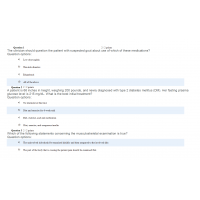
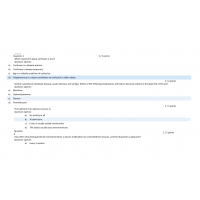
-200x200.JPG)
-200x200.JPG)